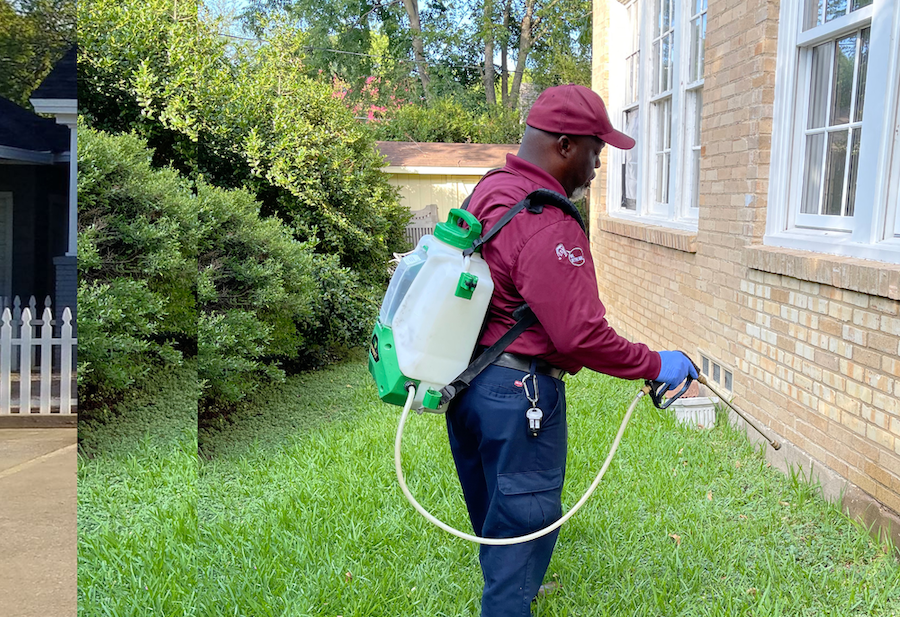Trusted A1 Exterminator Charlotte NC - Comprehensive Pest Solutions
Wiki Article
Bed Insect Treatment Malfunction: Comparing Chemical Vs. Non-Chemical Solutions
In the world of bug control, specifically when handling the relentless concern of bed insects, the choice in between chemical and non-chemical treatment services can be a crucial one. Both strategies provide distinctive benefits and disadvantages, affecting variables such as performance, security factors to consider, and overall cost. By examining the nuanced details of each technique, a clearer understanding of which path to go after in addressing a bed pest problem can be achieved.Effectiveness of Chemical Treatments
Chemical therapies for bed pest infestations have been extensively recognized for their potent and rapid effectiveness in eliminating these pests. When taking into consideration the performance of chemical therapies, it is crucial to understand that they can provide a extensive and fast service to a bed pest problem.Additionally, chemical treatments have the benefit of using residual effects, meaning that they can remain to eliminate bed bugs also after the preliminary application. This recurring activity is especially useful in combating any kind of possible re-infestations. In addition, the fast action of chemical treatments can bring relief to individuals facing serious bed pest problems, enabling them to reclaim control of their living areas quickly.
Safety And Security Worries With Chemical Solutions
One vital facet that calls for cautious consideration when utilizing chemical options for bed insect treatment is guaranteeing the security of owners and the atmosphere. Direct exposure to particular chemicals made use of in bed insect treatments can lead to breathing problems, skin inflammation, or other damaging reactions, particularly in people with pre-existing problems or sensitivities.Additionally, the environmental influence of chemical remedies is one more substantial consideration. Some pesticides made use of in bed pest treatments may be unsafe to beneficial insects, wildlife, and communities if they leach right into the soil or water supply. It is important to use chemical treatments judiciously, complying with safety standards, and thinking about much less poisonous choices to minimize these threats and make sure the safe and efficient monitoring of bed pest problems.
Benefits of Non-Chemical Strategies
Considering the potential safety concerns and ecological effect linked with chemical services for bed bug treatment, discovering non-chemical methods provides a promising alternative with a number of distinctive advantages. Non-chemical treatments are eco friendly, as they do not add to air or water air pollution, making them a lasting option for pest control.Additionally, non-chemical services can be reliable in targeting bed insects, consisting of hard-to-reach locations where chemical treatments may not penetrate - A1 bed bug treatment in charlotte. Methods such as warmth therapy, vacuuming, vapor cleaning, and mattress coverings provide comprehensive removal without the usage of damaging chemicals.
Limitations of Non-Chemical Treatments

Additionally, non-chemical treatments click over here frequently need several applications to achieve effective obliteration. This can be taxing and might not constantly assure total elimination of all bed insects and their eggs, particularly in hidden or hard-to-reach places.
In addition, the success of non-chemical treatments greatly counts on appropriate implementation and thoroughness, which can be challenging for people without specialist know-how. Insufficient application of non-chemical techniques might result in insufficient elimination, resulting in persistent invasions and the demand for extra treatments.
Consequently, while non-chemical treatments have their benefits, it is necessary to recognize these restrictions and consider them when identifying one of the most efficient approach for handling bed pest invasions.
Price Comparison: Chemical Vs. Non-Chemical Options
Offered the limitations connected with non-chemical treatments, a vital element to evaluate in the context of bed bug administration is the cost comparison pest care services between chemical and non-chemical choices. Chemical treatments commonly involve the application of insecticides by specialists, which can range from $250 to $900 per space, relying on the extent of the problem and the size of the location to be dealt with. In comparison, non-chemical treatments like warmth therapy or heavy steam can be much more pricey, with prices varying from $1,000 to $6,000 for an entire home. While the initial cost of chemical treatments might appear reduced, multiple treatments might be needed to fully remove the infestation, potentially raising the total price. On the various other hand, non-chemical choices may provide an extra sustainable and environment-friendly service, although they can be cost-prohibitive for some people. Eventually, when taking into consideration the expense of bed bug therapy alternatives, it is essential to weigh the in advance expenditures versus the performance and long-lasting sustainability of the selected approach.Conclusion

Considering the prospective security problems and environmental influence linked with bed bug pest control chemical services for bed insect therapy, checking out non-chemical strategies offers a promising choice with numerous distinct benefits.Provided the restrictions linked with non-chemical treatments, a crucial element to evaluate in the context of bed pest administration is the price comparison in between chemical and non-chemical choices. In comparison, non-chemical therapies like warmth therapy or vapor can be a lot more costly, with costs varying from $1,000 to $6,000 for a whole home. While the first cost of chemical therapies might seem lower, numerous treatments may be called for to completely eliminate the problem, possibly enhancing the overall expense.In conclusion, when contrasting chemical and non-chemical bed insect therapy alternatives, it is essential to take into consideration performance, security, advantages, constraints, and price.
Report this wiki page